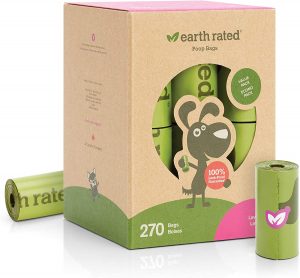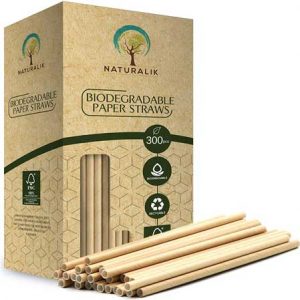Did you know that the fashion industry is the culprit for around 8% of the total carbon dioxide emissions measured in the atmosphere? While the percentage might not sound that big to some of you, the harsh truth is fast fashion is actually the second most polluting industry on the planet, right after the oil industry.
Needless to say, there is an imperative need to cut the harmful impact of the fashion industry on the environment. In this regard, biodegradable textiles, sustainable clothing, and bioengineered fabrics seem to be the future of fashion, as well as the potential “saviors” of the planet.
Below we are going to share a few insightful details about biodegradable clothing in general, ethical clothing brands, and sustainable clothes.
The Negative Impact Of Fashion On The Environment
The majority of people who buy clothes are not aware of the negative impact of their purchases on the well-being of our planet. For example, the manufacturing process for a simple pair of jeans will release no less than 13 kilos of carbon dioxide into the atmosphere. Moreover, 10 liters of toxic dyes and chemicals and over 2,000 liters of water are needed during the same process.
Fast fashion on the other hand, which is part of the world of biodegradable clothing, is a phenomenon that refers to the manufacturing of clothes that can be rapidly disposed of from consumers’ wardrobes usually straight into landfills, where they normally need several months up to a few years to completely decompose.
Asia is the main manufacturer of fast fashion and the clothes produced here are so volatile and easily disposable because chain stores decide to switch up their products once every few weeks. This generates a continuous manufacturing cycle needed to keep up with the changes in trends, thus generating an increasingly negative impact on the environment.
The large amounts of pesticides, dyes and other toxins used in the manufacturing processes, the large amount of electricity and water consumed by the manufacturers and the polluting fumes from the vehicles used to transport the clothes to the rest of the world are devastating for the planet.
The textile manufacturing industry is also causing 20% of the total water pollution at a global level, while also triggering large buildups of landfill clothing. This is another waste management problem that requires solid solutions. In many parts of the world, the waste generated by the fast fashion industry has been labeled as a type of environmental emergency. The fact that only around a quarter of the millions of tones of clothes that are manufactured and disposed of are recycled every year comes to add even more to the problem.
Serious changes are needed in the fashion industry and more environmental responsibility is necessary. The solutions are biodegradable textiles and clothing.
What Are Biodegradable Textiles?
Biodegradable textiles refer to those materials that will decompose once they will reach the landfill, turning into natural elements due to the quick action of bacteria, plants or animals – making the ideal candidates for the topic of biodegradable clothing. A series of additional agents are needed in the process, including water and sun so these decomposed materials can turn into compounds that can actually be used as nutrients in the environment.
Bio garments or sustainable clothing such as trousers, shoes, and t-shirts are manufactured with the purpose of impacting the planet to a minimum during their life cycles. In other words, they are manufactured with the help of fabrics that are sustainable, biodegradable or eco friendly. An impressive number of clothing producers have started to embrace this biodegradable fabric trend in recent years, relying on hemp, organic cotton, linen, or coconut and a variety of other materials that have been recycled, including recycled plastic and nylon retrieved from the bottom of oceans.
Instead of using the regular polluting toxins such as phthalates, azoic dye, chlorinated solvent, or organotin compounds to produce clothes, many fashion brands have partnered up with associations that are trying to eradicate the use of dangerous chemicals throughout the entire value chain of clothing.
One good example is the Zero Discharge of Hazardous Chemicals program that focuses on the elimination of hazardous toxins when manufacturing leather, footwear, and textile garments.
Plus, the introduction of ecological certificates is another essential solution that is meant to promote a more sustainable fashion industry while offering organic quality stamps. These organic stamps express the fact that the manufacturer is committed to protecting and preserving the environment. When shopping for clothes, consumers should look for labels that read Global Organic Textile Standard, Oeko-Tex or OE, which certify the fact that the respective garments have been manufactured using a high percentage of organic fibers, or that that have been manufactured without any toxic dyes and chemicals.
While biodegradable textile is a lot more environment friendly compared to fast fashion products, these items also have a small impact on the environment as well. Consumers should get more involved in the process of minimizing the negative effects of the fashion industry by wearing their clothes for longer periods of time, handing them over to associations that can recycle and repurpose them or only disposing of them in dedicated containers.
The Use Of Eco Friendly Fabric Made From Live Organisms
Live organisms can be used to grow biodegradable textiles which, in turn, can be used to produce eco-friendly materials in labs. In some cases, it is possible to produce items that are nearly complete items and do not require any additional assembling in factories.
Today’s clothing is woven using acrylic that relies on plastic, as well as polyester or nylon. The acrylic is cut and sewn in special clothing factories and these fabrics are manufactured with the help of chemical processes. They are also non-biodegradable.
Researchers have figured out ways of bioengineering these procedures and relying on living bacteria as well as fungi, algae, or yeast that will break down the clothes into biodegradable and eco-friendly substances when disposed of. These solutions could significantly cut the pollution and amount of waste at a global level.
Plus, the fact that the live organisms used in the process are easy to grow with the help of fit molds means clothes could be manufactured without any excess materials that need to be peridically discarded.
With the help of a certain type of algae, for instance, researchers could create a yarn-like fiber that is ready to be dyed using non-harmful pigments obtained from the shells of crushed insect. These alga-based textiles could be the future of bioengineered clothing due to their flexibility and sturdiness. These are two essential properties when it comes to the mass-market apparel industry.
The fact that the same alga-based textile can withstand fire means the number of toxic flame retardants can be considerably cut when manufacturing clothes. Plus, alga seems to be more biodegradable compared to cotton, and growing it can be done without having to use any harmful pesticides.
Certain bacteria, compostable waste and fungi can be used to grow clothing fabrics, while indigo leaves and avocado can be used to naturally dye the clothing. Discarded pineapple tips can be used to obtain fibers for sticking the molds. This way, most of the production waste is eliminated and the same goes for the textile scraps.
What The Future Holds
While research studies are reassuring, there are still plenty of challenges when it comes to the implementation of those procedures that can replace standard textiles with bioengineered fibers and natural dyes. One of the greatest problems here is the manufacturing of materials that are sturdy enough to withstand the regular wear and tear factor. This could be done with the help of smoke tanning practices instead of using regular chemicals, for instance.
While most of these environmentally-friendly textiles are limited to research labs, high fashion shows or science fairs, it is a matter of time until more eco friendly clothing brands will start to pop on the market and manufacture hemp clothing and bioengineered apparel at similar costs to conventional apparel.



![Paper-Drinking-Straws-[200-Pack]-100%-Biodegradable---Assorted-Colors](https://www.eco-friendly.website/wp-content/uploads/2021/05/Paper-Drinking-Straws-200-Pack-100-Biodegradable-Assorted-Colors-300x267.jpg)

